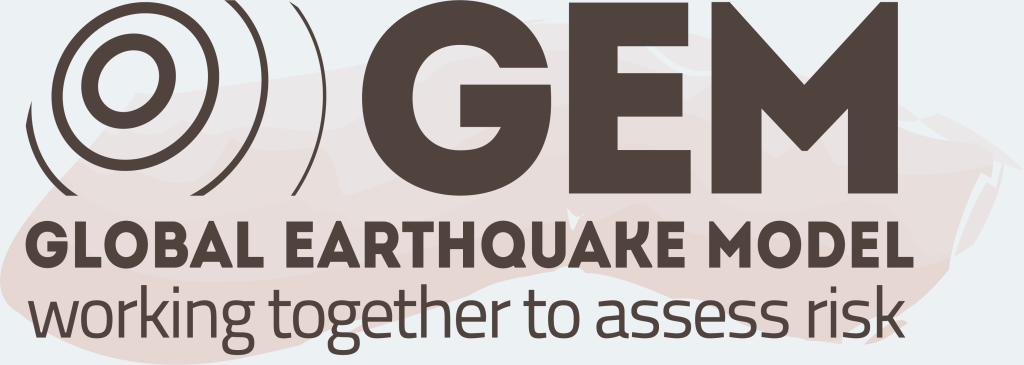| Average Annual Fatalities |
Expected number of earthquake fatalities in buildings from potential earthquakes expressed as average fatalities per year. Fatalities are not expected to occur every year, rather, they are expected when large events occur and this value represents the total number of fatalities annualized over one year. |
| Annual Building and Contents Economic Loss |
Economic losses to building structures and contents in a given year based on probabilistic earthquake assessment.. Values given in 2019 Canadian dollars and losses are repair or replacement values. |
| Annual Building and Contents Economic Loss Ratio (%) |
Losses to building structures and contents given as a ratio relative to the total value of those items. This is consistent over any year or time period. For example, if an area has 5,000,000 worth of building and contents, and 4,500,000 of damage is done, the ratio will be high (0.9). If 250,000 of damage is done, the ratio will be low (0.05). |
| Annual Probability of Fatality |
Probability of a fatality in a building from an earthquake in any given year in the area identified. |
| Building Economic Loss (Scenarios) |
The economic loss in 2019 Canadian dollars due to the earthquake scenario’s expected damage to building structures, such as the building frame and roof. Costs given are repair or replacement values. |
| Building and Contents Economic Loss (Scenarios) |
The economic loss in 2019 Canadian dollars due to the earthquake scenario’s expected damage to building structures and their contents. Costs given are repair or replacement values. |
| Building Type |
General building construction type based on standard North American HAZUS classification. (United States Federal Emergency Management Agency in section 5.3 of the HAZUS Earthquake Model Technical Manual (version 4.2)) |
| Buildings with ‘Complete’ (or Given) Damage over 50 Years (Probabilistic) |
Total number of buildings in the area likely to sustain complete damage (or other given damage state) over a 50 year (return) period. See damage state definitions in the glossary list. |
| Collapsed Buildings |
Collapsed buildings are a fraction of completely damaged buildings. See FAQ for more details. |
| ‘Complete’ Damage |
Complete damage is a building which has become dangerously unstable or collapsed. It will likely have failed walls, beams, columns, anchors, and/or connections, as well as large permanent lateral displacements. See FAQ for more details. |
| Critical Hospital Injuries |
Number of entrapments and persons expected to suffer life-threatening injuries requiring care in a hospital intensive care unit (Severity Level 3) in the earthquake scenario if it occurs during daytime hours. See FAQ for more details. |
| Design Level |
Assigned seismic design level based on site-level ground shaking intensity and construction epoch. Design levels are classified by HAZUS as per the HAZUS Earthquake Model Technical Manual (version 4.2) and discussed in the Retrofit report identified in the Additional Documentation section. |
| Disaster Debris |
Expected volume of disaster debris generated as a result of building damage in the earthquake scenario, given in tonnes. |
| ‘Extensive’ Damage |
Extensive damage involves significant alteration to the shape and structure of the building, which may include partial collapse. These buildings may be conditionally habitable. It can mean large through-the-wall diagonal cracks, visibly buckled walls, large lateral displacements, missing bricks, or a falling of the building off its supports/anchoring. See FAQ for more details. |
| Fatalities |
Number of expected fatalities resulting from complete building damage and/or collapse (Severity Level 4) in the earthquake scenario if it occurs during daytime hours. See FAQ for more details. |
| First Aid Injuries |
Number of persons expected to suffer injuries requiring basic first-aid treatment (Severity Level 1) in the earthquake scenario if it occurs during daytime hours. See FAQ for more details. |
| Ground Shaking |
Ground shaking is measured in peak ground acceleration and spectral acceleration in units of gravity (9.81 meters per second squared) or ‘g’. Ground shaking for this model is based on Canada’s National Seismic Hazard Model. |
| Magnitude |
Magnitude is a measure of the size of an earthquake, given in unitless values on the logarithmic moment magnitude scale. Earthquakes of a given magnitude will be felt differently in different areas, depending on how close the earthquake is and the type of rock or soil beneath you. |
| ‘Moderate’ Damage |
Moderate damage is characterized by diagonal cracks, with some larger cracks expected on walls with door or window openings. These buildings are still habitable. See FAQ for more details. |
| Noncritical Hospital Injuries |
Number of persons expected to suffer non-life-threatening injuries requiring specialized medical treatment (Severity Level 2) in the earthquake scenario if it occurs during daytime hours. See FAQ for more details. |
| Number of Buildings with ‘Given’ Damage (Scenario) |
The total number of buildings expected to experience the given damage state in the earthquake scenario. See damage state definitions in the glossary list. |
| Occupancy Class |
Specific building occupancy class based on standard North American HAZUS classification as identified in the HAZUS Earthquake Model Technical Manual (version 4.2). |
| Probabilistic Earthquake Risk |
Probabilistic earthquake risk is assessed by estimating the potential consequences from many possible earthquakes that could occur in Canada, and combining the results to estimate risk over a time period of interest. It is not generated from one single earthquake scenario, but rather, from many potential scenarios. See Probabilistic Earthquake Risk for more information. |
| Probability of Complete Damage over 50 Years (Probabilistic) |
The probability that a building in the area will be completely damaged (or experience the given damage state) over a 50-year period. It is also the portion of buildings in the area expected to experience the given damage state over 50 years. See damage state definitions in the glossary list. |
| Retrofit |
By upgrading buildings to make them more resilient to earthquakes, losses can be reduced. These upgrades are designed by structural engineers, and can include many solutions depending on the building and conditions, such as adding steel bracing to the building frame.
In the exposure model, buildings were assigned a seismic design level, either as high, moderate, low, or pre-code, depending on their age of construction and the level of seismic hazard in the region. To model the potential benefit of retrofitting, the risk model is run with buildings being upgraded from their baseline design level to an improved level, such as pre-code to moderate code. See more information about the approach used to model retrofits in Additional Documentation.
|
| Risk Rating |
A qualitative rating that helps interpret the meaning of a risk score, ranging from ‘Very Low’ to ‘Very High’. The ratings show risk relative to other communities and identify how the risk of a community compares with other communities considered in the study.
The ratings are assigned using a clustering approach. The approach divides all communities into groups such that the communities within each group are as similar as possible, while the groups are as different as possible.
|
| Risk Score – Percentage Impact (Normalized) |
Percentage impact in each area is calculated and used for this risk score. Percentage impact is the portion of an areas total assets and population expected to be impacted by earthquakes. The risk score identifies how the percentage impact in the area compares to the percentage impacts expected for other communities in Canada. A high percentage risk score means that this community has a higher percentage risk than other areas in Canada — a higher proportion of the community will be impacted by earthquakes than other communities. Areas exposed to high seismic hazard that have vulnerable buildings are expected to have the highest absolute risk scores. |
| Risk Score – Total Impact |
Total impact in each area is calculated and used for this risk score. The risk score identifies how the total impact in the area compares to the total impacts expected for other communities in Canada. A high total risk score means that this community has a higher total risk than other areas in Canada. Large urban areas in active seismic zones are expected to have the highest absolute risk scores. |
| Scenario |
An earthquake scenario has a specific magnitude, location, and source fault and represents a single potential earthquake event. Scenarios are developed for known faults, historical earthquakes, or regions where we know earthquakes can happen. See Scenarios for more information. |
| ‘Slight’ Damage |
Slight damage is mostly small cracks and minor slipping at bolts. Slightly damaged buildings are still habitable and may not even seek repairs if they are under-insured or their deductibles are high. See FAQ for more details. |



